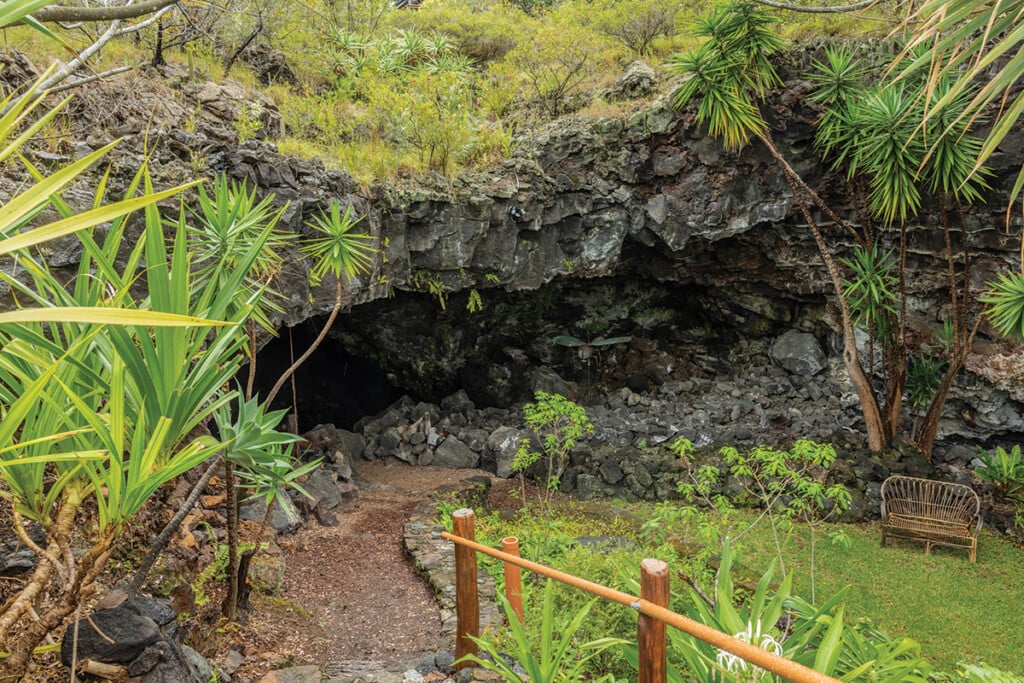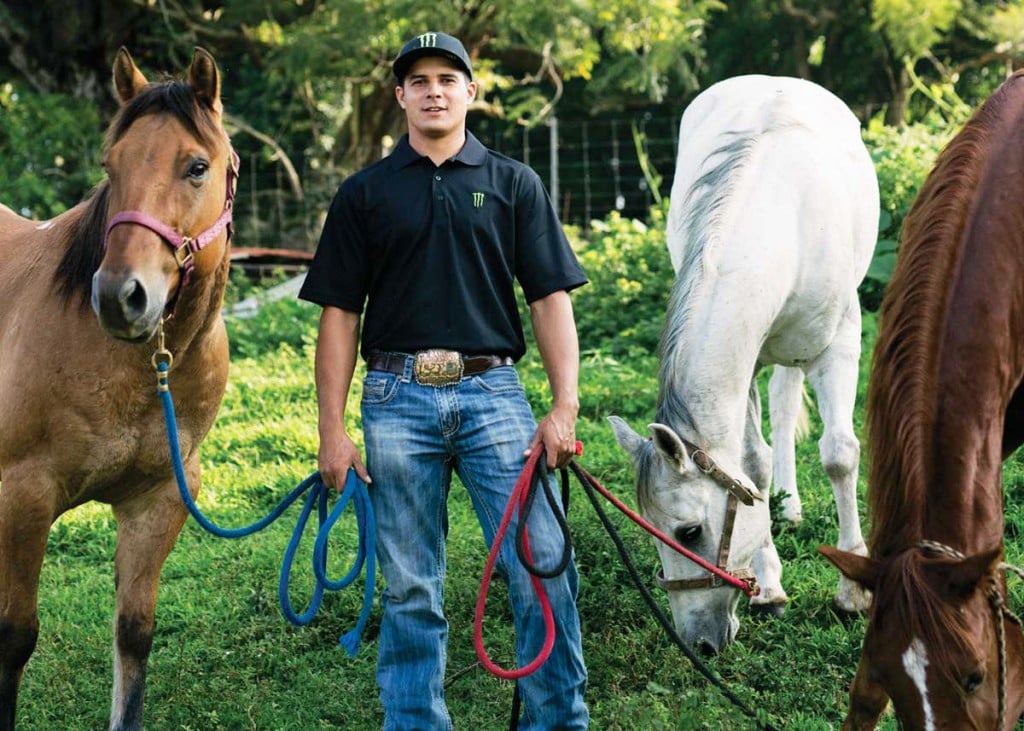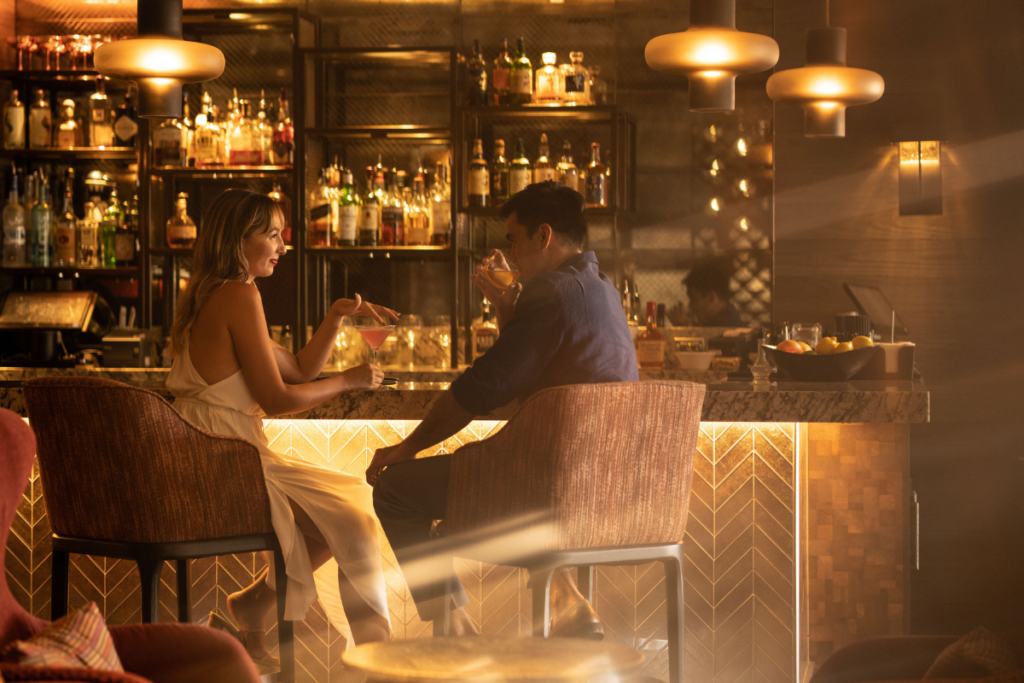You Can Traverse Through Lava Tubes on this Guided Tour
Kula Kai Caverns' maze of lava tubes weave science, history and adventure on Hawaiʻi Island.

Passing by a series of subterranean geological features named cave chocolate, cave bacon and cave popcorn, I start to wonder if Oompa-Loompas might also be found in Kula Kai Caverns, part of a vast underworld beneath the southwestern slopes of Mauna Loa. While I don’t end up nibbling the scenery like the kids in “Charlie & The Chocolate Factory,” I still find myself eagerly drinking in the fascinating lore of the Earth’s third-largest system of lava tubes.
Known as Kīpuka Kanohina, this complex in Ocean View, halfway between Kailua-Kona and Volcano Village in Hawai‘i Island’s rugged Ka‘ū District, includes 42 miles of lava tubes and multiple entrances. Twenty-seven miles of those tubes are braided, or interconnected, and all are privately owned or part of the nonprofit Cave Conservancy of Hawai‘i, which seeks to preserve them. Open to guided tours since 2002, Kula Kai Caverns offers the only way the general public can explore this labyrinth below the gated Kula Kai Estates neighborhood.
I decided to book the longest and most challenging of three expeditions after much conversation with Gary Gura, the congenial office manager who also led Kula Kai tours for eight years. The archaeological and lighted trail tours, both about an hour long, don’t require flashlights or any special gear besides closed-toe shoes. The two-hour tour starts by covering the same ground as the lighted trail tour, then continues for another hour or so in unlit areas, with participants donning lighted helmets, gloves and, for navigating low and rough patches, kneepads. Gura assures me that my tall and stocky self won’t get trapped like Augustus Gloop in a pipe. “If I can do it, you can do it,” he promises.

Kula Kai Caverns’ Lighted Tour begins by descending 75 stairs into an 1,100-year-old lava tube.
Photo: Robert Carlin
I’m relieved when it turns out our tour guide for the day, Mo Hefnawy, is 6-foot-4. One of many avid cavers who live in the neighborhood, Hefnawy could even commute to work underground if he wanted to, navigating the third of a mile between home and the caverns in 45 minutes. All tours begin inside a small hut, where visitors examine a sprawling, color-coded map of Hawai‘i Island’s millennia of lava flows and two chunks of lava rock. The lightweight one is ‘a‘ā lava, produced by fast-moving flows like the one at Mauna Loa in 1907 that gave the topside of Kula Kai Estates its jagged lunar landscape; the heavy one comes from slow-moving, hotter pāhoehoe lava. The latter kind of lava, Hefnawy explains, is rarer, represented in just 10% to 15% of all lava flows, and it’s the only kind that can produce lava tubes.
Kula Kai Caverns’ network of subway-sized and smaller tubes took shape some 1,100 years ago. Rain and cooling pāhoehoe causes the majority of lava tubes to collapse, but in arid Ka‘ū, the lava tube created by the first flow formed a strong ceiling that remained, and eight more flows followed below it over a five-year period. Outside the landscaped entrance to the lava tube, nine differently colored layers of rock tell the story.
The varying hues stem from mineral composition and the passage of time, which also affect the tube’s tasty-sounding formations, Hefnawy says. A mix of molten manganese and iron that solidifies as it drips creates “dark or milk cave chocolate”; gypsum and iron that oxidizes for several hundred years create the streaks called cave bacon; and rivulets of seeping water lead to the little calcite and gypsum knobs known as cave popcorn. Spidery roots of ‘ōhi‘a lehua trees dangle from the ceiling in some areas.

Kula Kai Caverns guide Mo Hefnay points to formations known as cave popcorn.
Photo: Robert Carlin
Hefnawy calls the layers of lava tubes “nature’s Brita filter.” As rainwater descends through the porous rock, it’s purified, he says, and Hawaiians would use gourds cradled in a circle of stones to gather it. We stop at one of several platforms to sample cool water collected in a bucket—but only after gawking at the one slightly cheesy element of the tour: a portion of the lava tube lit red to simulate active lava. I have to admit it does make a fun photo op.
Because guides customize tours to guests’ abilities and inclinations, the second part of our expedition is only moderately challenging. I find I can stoop through some low passages, while the helmet, gloves and kneepads protect me and my jeans quite nicely for the few feet I have to crawl on my hands and knees. Lava tubes are home to a few unique species of insects and other small creatures—cave moths and cave spiders among them—but we’re far enough in that I don’t have to worry about encountering any, Hefnawy says.
These lava tubes also show no signs of human burials, and any remnants of historic Hawaiian presence, such as torch sticks and gourd cradles, have been carefully preserved. A Mexican microbiologist recently discovered some nearly invisible treasures here: pathogen-killing microbes that host over 80 different kinds of antibodies. “And we only know what 20 of them are,” Hefnawy notes, shining an ultraviolet light that reveals a purple smear of microbes on the lava tube’s wall.
With so much more to see and learn in Kula Kai Caverns, I’m glad I don’t need to find a Golden Ticket to return.
The one-hour lighted-trail tour is $28 for ages 13 and older, $18 ages 6 to 12, free for ages 5 and younger. The two-hour tour is $95 for ages 13 and older, $65 ages 8 to 12 (not recommended for younger children.) The one-hour archaeological Tour is $34 for ages 13 and older, $18 ages 6 to 12, free for ages 5 and under. Wear closed-toe shoes and, for the two-hour tour, long pants.
92-8864 Lauhala Drive, Ocean View, Hawai‘i Island, (808) 929-9725, kulakaicaverns.com
Travel writer and guidebook author Jeanne Cooper enjoys living above the ground in Hawai‘i Island’s North Kohala district.
This story was originally published in our Fall 2024 issue, which you can buy here. Better yet, subscribe and get HAWAIʻI Magazine delivered to right to your mailbox.


